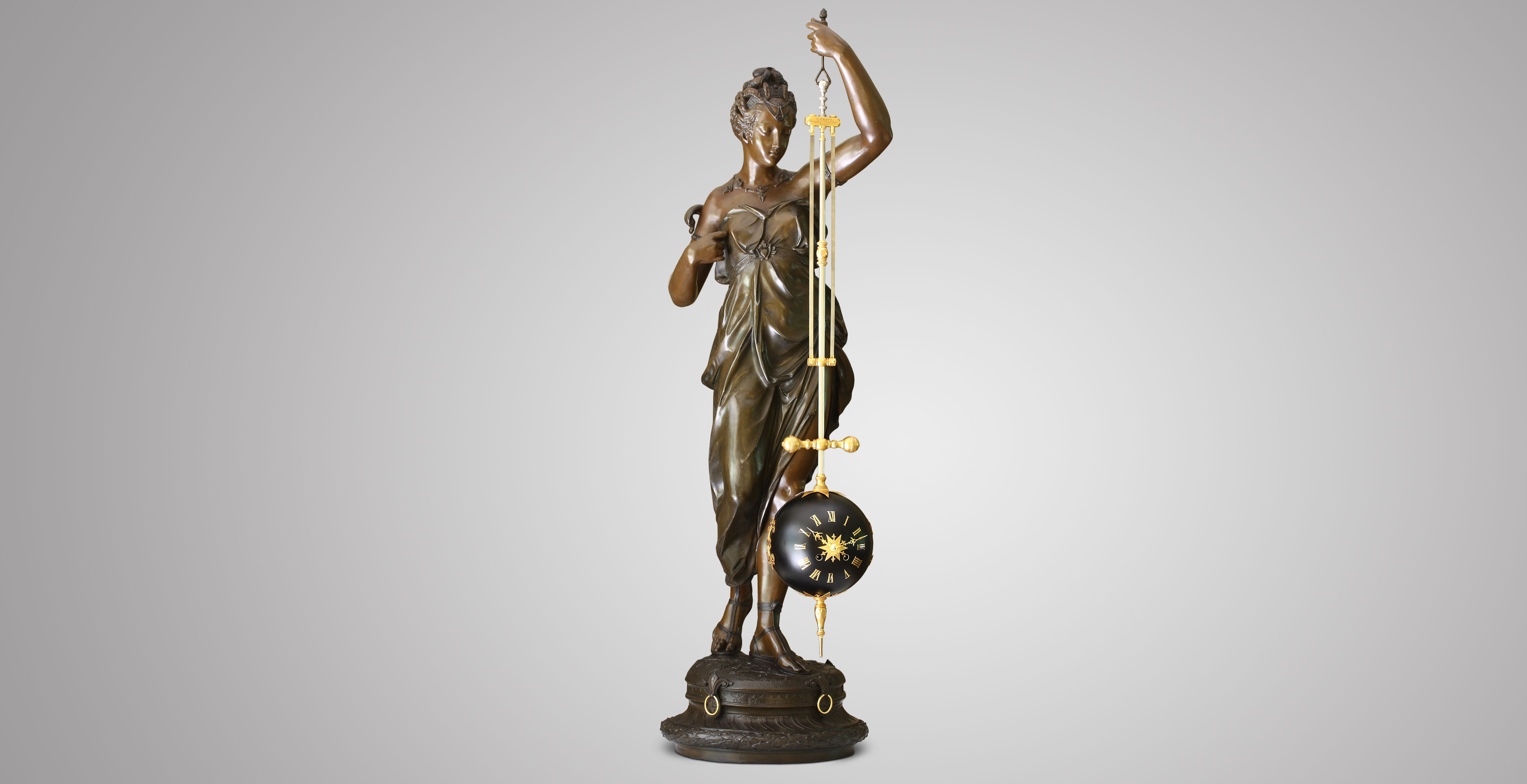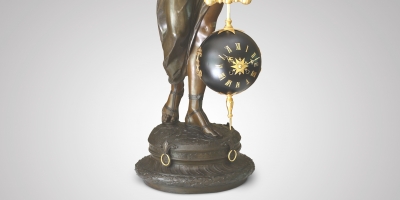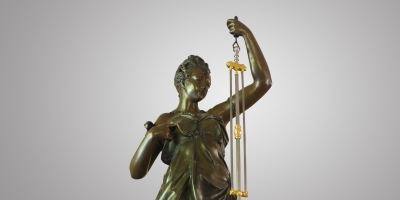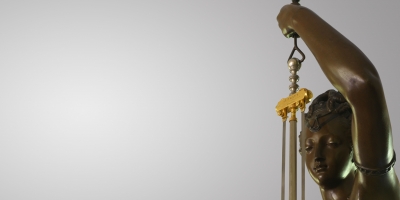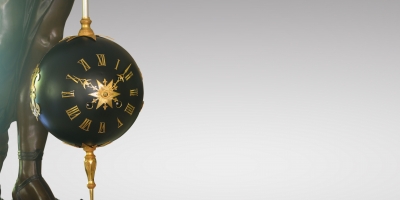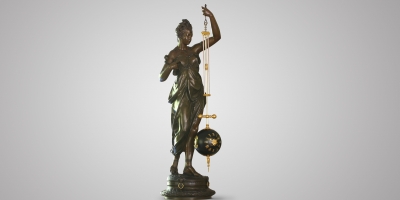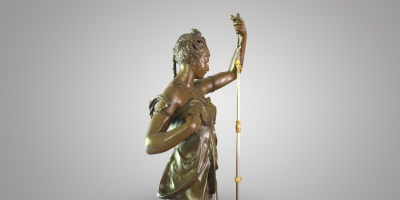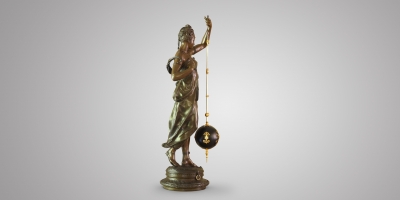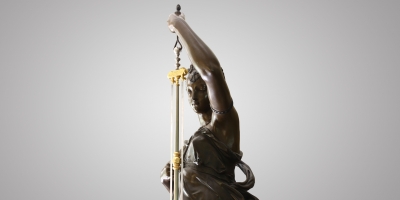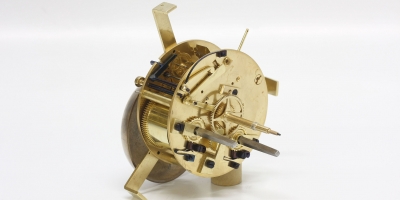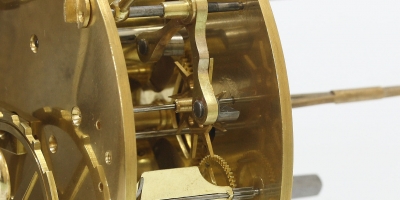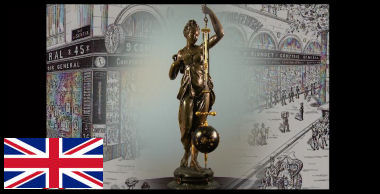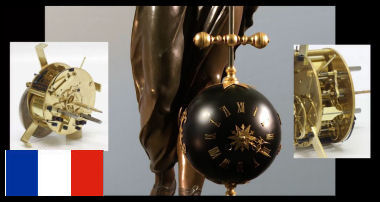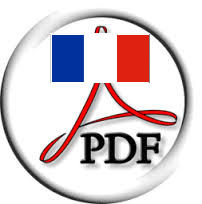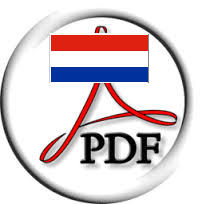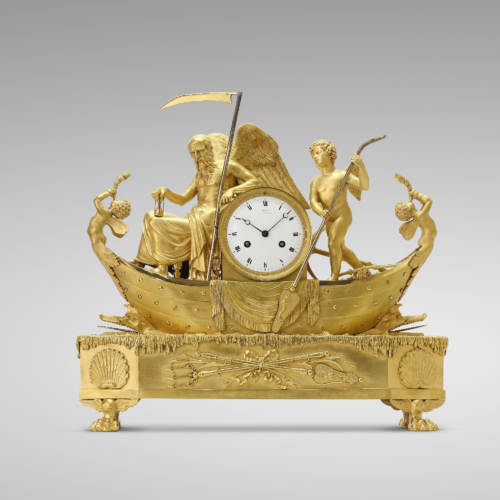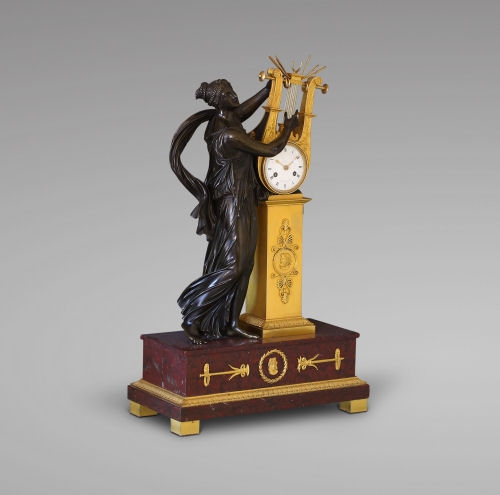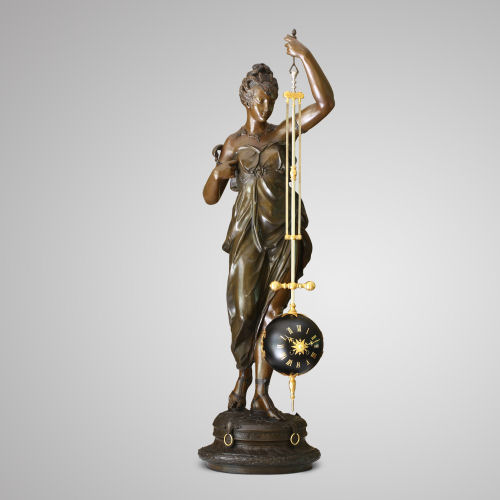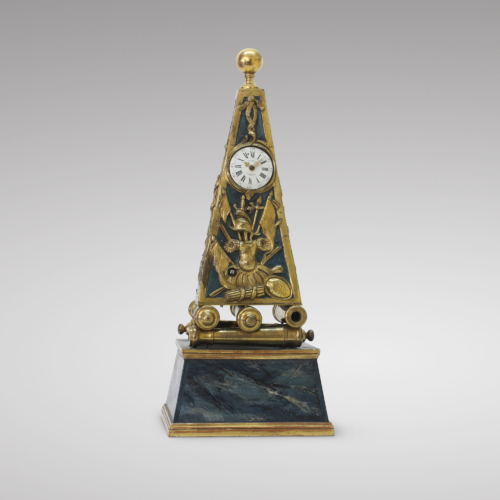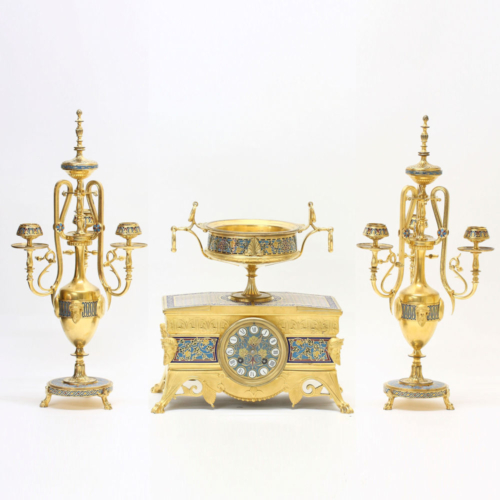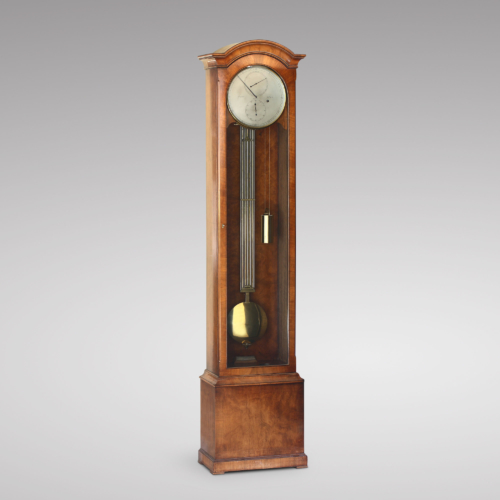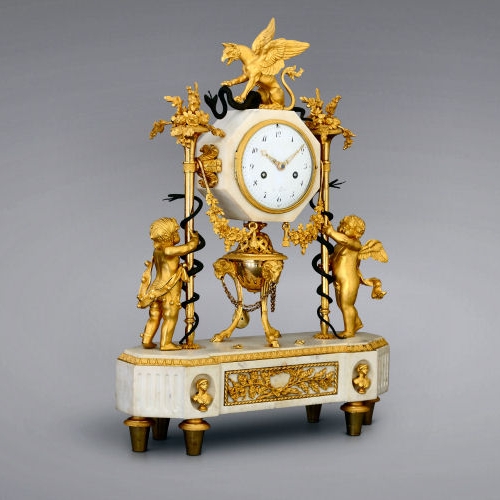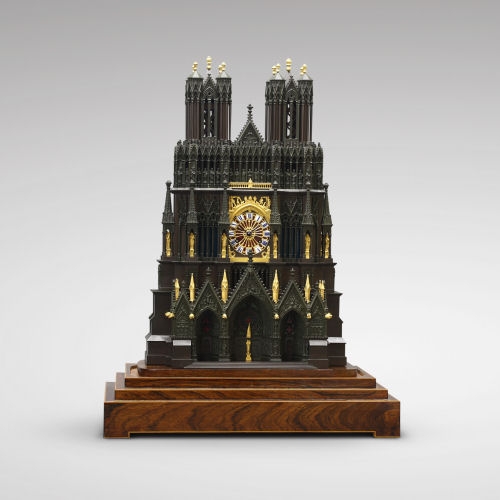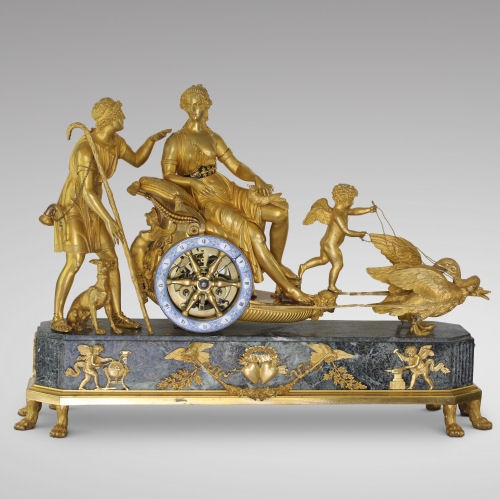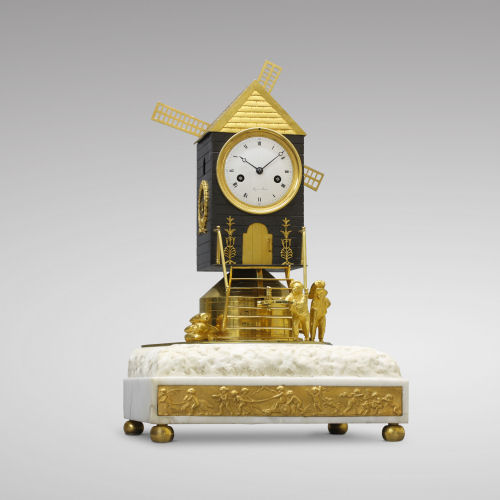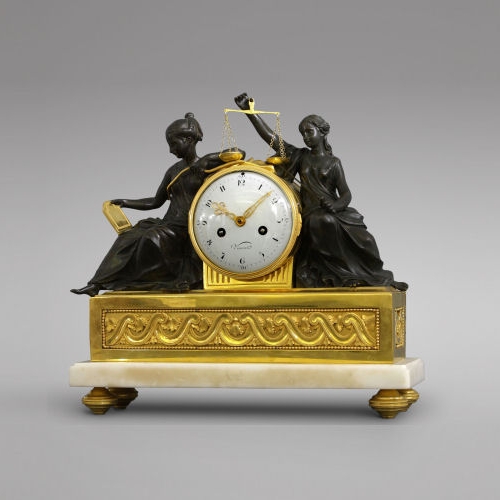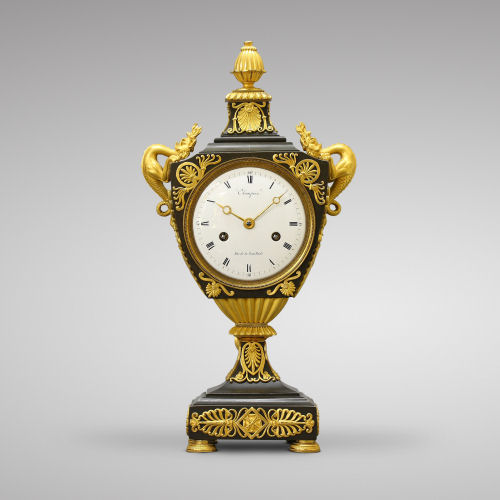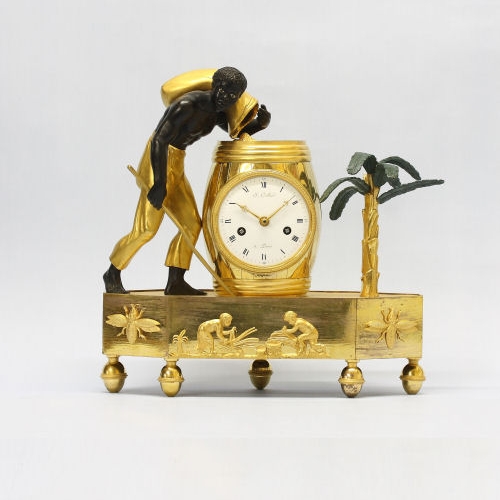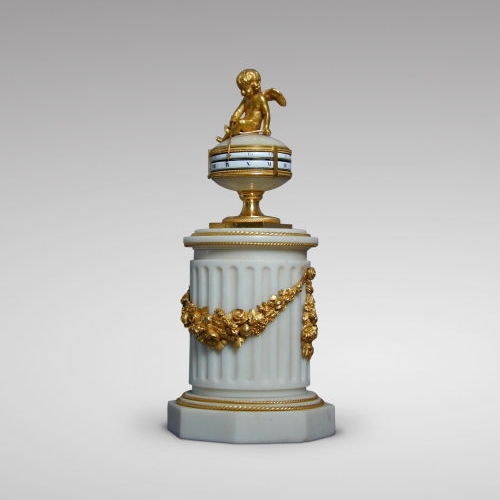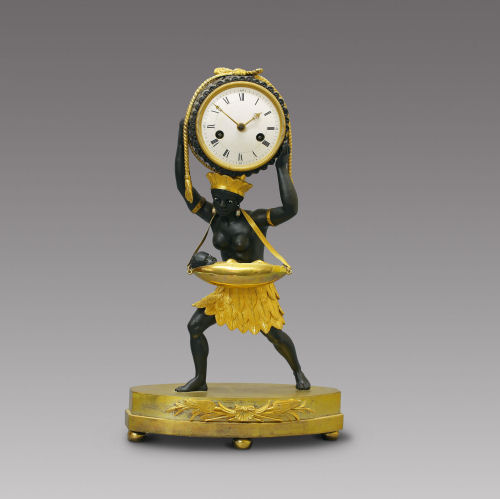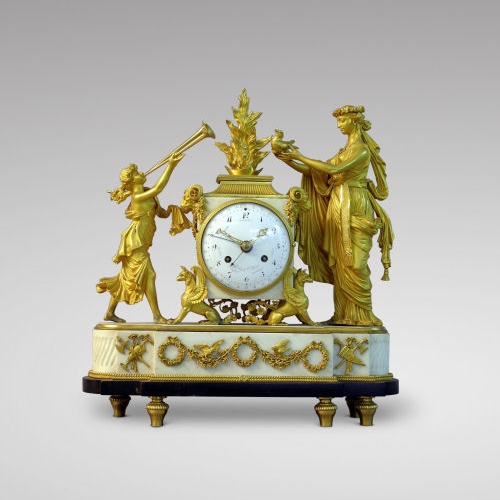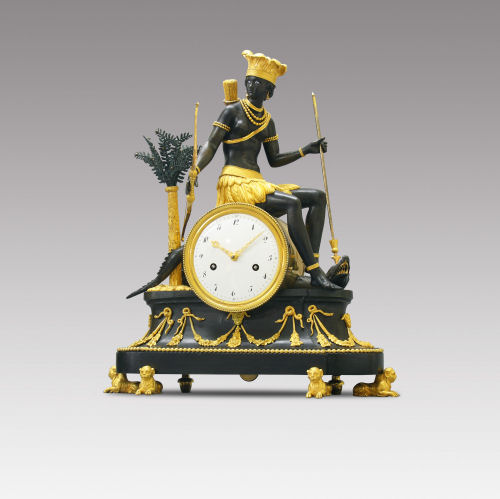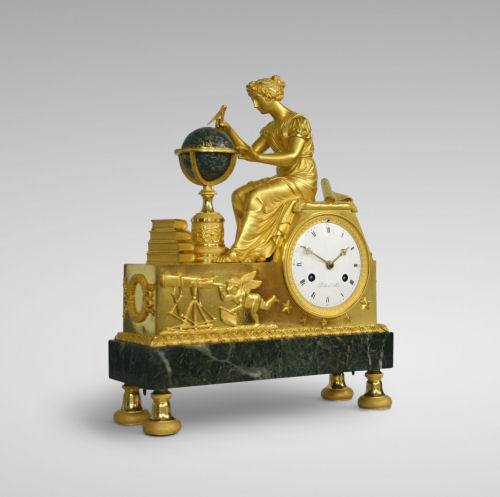Important mystery clock of large-scale with torsion pendulum, signed J. Pratt, Comptoir General, Paris. Circa 1890.
Large Paris-type movement with Brocot half-rollers escapement of exceptional size interacting with a 9-teeth escape wheel (!) The swing from left to right is through a thin rod placed inside the larger vertical nickel-plated rod suspended by the arm of the statue. The black painted sphere-shaped dial is hollow and contains the clock’s movement. The whole swings from left to right at about a 30° angle, the assembly hanging through two long and thin suspension blades. Countwheel strike every half-hour on a silvered bell. Autonomy 8 days.
The dial has twelve applied chased gilt-brass Roman hour numerals surrounding a central star and two finely chased gilt-brass half-moon hands.
The two-tone patinated spelter support, in the form of a draped female figure inspired from celebrated Italian Renaissance models; the sculpture in contrapposto, brings movement and lightness to the composition. The dial, gracefully suspended from the figure’s hand at the end of a long embellished shaft, terminates in a fine point. The latter highlights the impression of mystery emanating from the sphere, which moves around itself instead of swinging to-and-fro: the figure’s hand remains stationary and, yet, the sphere continues to move with no obvious impulse to keep it going!
Genuine tours de force and triumphs of ingenuity, mystery clocks are designed to hide their workings, creating the kind of illusion we see here: a contrast between the figure’s perceived movement and the sphere’s static horological precision.
Dimensions
H.123 cm (48 ½"), W. 35 cm (13 ¾"), D. 40 cm (15 ¾").
Le Comptoir Général
According to an advertisement in the 1896 issue of Didot-Bottin (directory and almanac for commerce, industry, judicial and civil services) the Comptoir Général, a retailer, was one of ‘the most well-stocked shops for everything from: jewellery, bronze art objects, timepieces & furniture, precious stones, marble sculptures, silverware, ceiling lights & white metal, chandeliers, cutlery, lamps & diamond-facetted fireplaces, travel clocks, “fine-stone” pearls.’ It boasted ‘factory prices’ and ‘retail stores in Paris with no other branches, representatives, or offices in any other city, French or foreign.’ The Comptoir Général was represented by Maison H. Riondet & J. Pratt, Succ., located at 9, boulevard Poissonnière and 45, rue du Sentier in Paris. The 1911 Annuaire de la Curiosité et des Beaux-Arts, a directory of curiosities and fine art, shows that the retailer was a member of the bronze manufacturing trade union.
Intersecting the grand Parisian boulevards, the Comptoir Général was located on the royal route, which under the Second Empire already connected the Madeleine to the Gymnase Theatre. The retailer figured among the great Parisian stores of the late nineteenth-century, providing “free entry” to customers. Strolling from the Place de la Madeleine to the Café des Variétés on Boulevard Montmartre, elegant crowds stopped to admire the store’s display windows, stocked in an abundant and spectacular manner.
The Comptoir Général was contemporary with other great department stores of the period, like the Grands Magasins du Louvre, Bon Marché, and La Samaritaine, and attested to the new forms of commerce developing during the second half of the nineteenth century. These stores became showcases; advertising in newspapers, they offered the consumer a diverse and varied product, displayed in a way that was elaborate and often luxurious.
Price
On request
A short film in English...
...or in French
